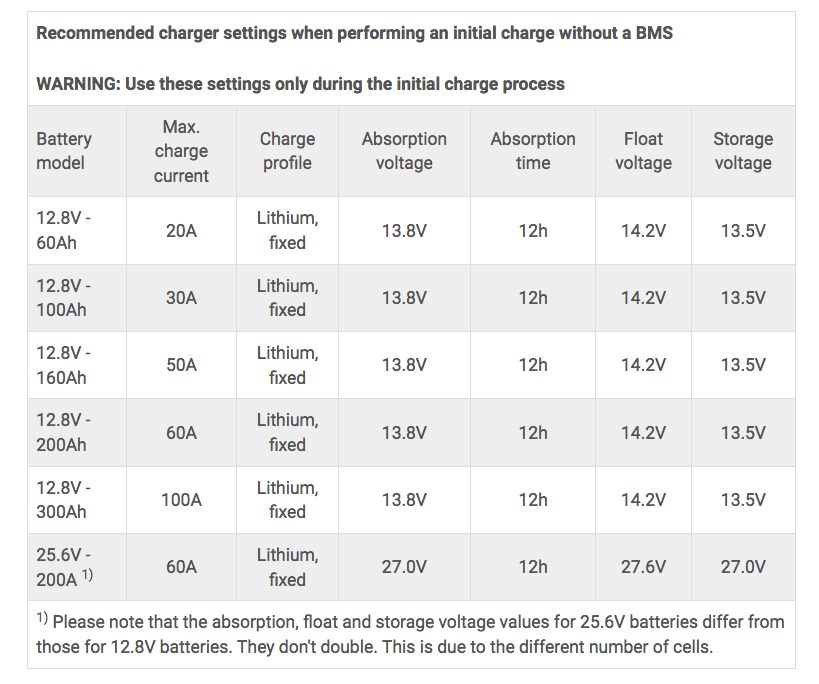The attached screen shot is from the 2024 version of the Smart Lithium Battery manual. It's from chapter 8 - Appendix, 8.1 - Initial Charge Procedures Without BMS. The voltages in the columns for Absorption and Float look like they're the wrong way around to me. Or am I wrong about this? Thanks.

